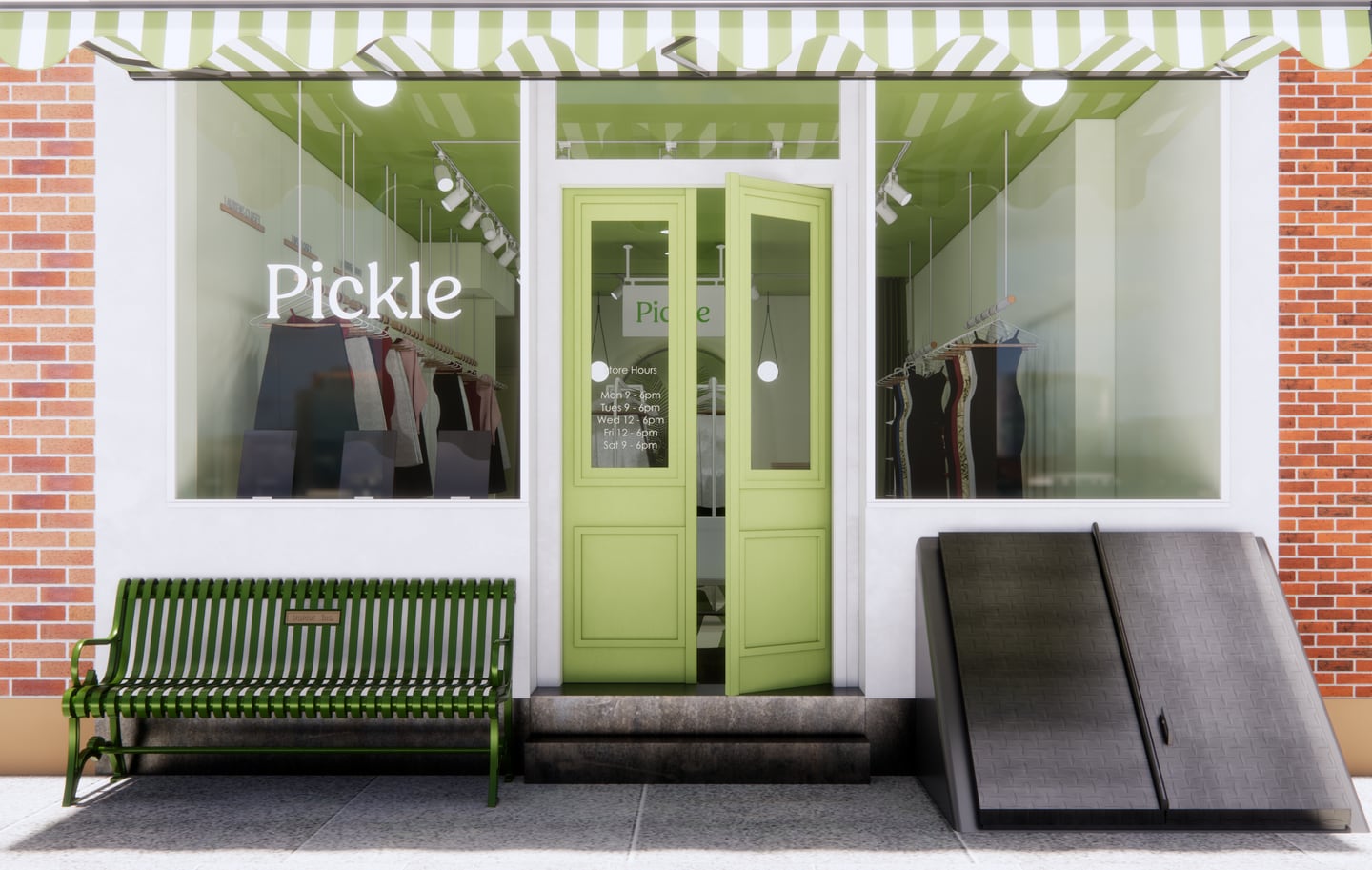
By day, Ari Merkle has a job in medical sales. But much of her free time is spent on the peer-to-peer fashion rental platform Pickle, where she has about 100 items listed.
Merkle will spend hours on nights and weekends answering questions from potential customers about sizing and fit. Thursday nights are for packing outfits to be given to her doorman, who receives a steady stream of renters every Friday. If a trendsetting celebrity like Hailey Bieber wears a piece similar to one she owns, she makes sure to upload photos of that to her closet too.
The money she’s making from renting out her closet could cover her New York City rent – if she weren’t ploughing her earnings into buying trending pieces in different colours and sometimes even different sizes (Mirror Palais and Buci are in high demand with Valentine’s Day around the corner, and of course, so is anything that screams “mob wife,” she says).
“At first. it was just a really fun hobby for me,” Merkle said. “And then it just started getting busier and busier.”
Pickle, which launched its peer-to-peer fashion marketplace in 2022, is among the newest in a wave of apps that allow people to rent out clothing they own. Other start-ups offering their spin on the “infinite closet” include By Rotation, Tulerie and Rotate Your Closet.
These companies are hoping to side-step the inventory headaches and high costs that have plagued Rent the Runway, which kicked off the clothing rental boom but has struggled to contain losses and increase sales since its 2021 initial public offering.
While peer-to-peer rental services are growing fast, they haven’t solved all of the category’s problems – ordinary consumers now have a window into fashion’s tight margins and the grind of keeping up with fast-moving trends. To succeed long-term, they will need to prove to power users like Merkle that the work they put into the app will eventually pay off. But by giving users a financial incentive to participate in the rental economy, Pickle and its rivals are betting they can expand the concept beyond its current niche status.
“Our whole goal is really to help people monetise an asset that previously had no potential for return on investment,” said Pickle chief executive Brian McMahon, who met co-founder Julia O’Mara while both were working at the investment firm Blackstone.
A Splintered Market
Pickle allows users to rent and rent out clothes anywhere in the US. However, customers are mostly concentrated around New York (this is partly because locals can pick up rentals directly rather than waiting for them to be shipped). Los Angeles is the company’s next target market. Similarly, By Rotation expanded to New York last summer, four years after launching in the UK and Europe.
Despite being a relative newcomer, Pickle has quickly gained traction, thanks in part to TikTok, where #ShopOnPickle appears on nearly two million videos. The platform has also attracted influencers like Remi Bader, Lauren Wolfe and Kit Keenan, the daughter of designer Cynthia Rowley (the elder Rowley also listed items from her new ski collection in January).
Pickle declined to disclose its sales. The company takes a 20 percent cut on transactions, and says it has over 70,000 items listed. The company raised $8 million in October from investors including Stubhub founder Jeff Fluhr, valuing it at $30 million. Pickle’s first physical store opened in December in New York’s West Village, where it hosts hundreds of items from its top rental closets that people can browse in person and take home immediately.
The company sees its strong social aspect as an asset; users can discuss trends and compare notes on the best way to manage their closets.
“[The user community] keeps me loyal,” Merkle said. “If you’re … investing all this time in one app you might as well just keep investing in that same app, right?”
Closet Complexities
The average Pickle closet has around 10 items listed, although heavy users might have a few hundred items for rent. Most pieces cost around $400 to $450 at regular retail; while the rental price is ultimately determined by each owner, the platform guides users to set it around 10 to 15 percent of the original price.
Many users are renting out items they originally purchased to wear themselves. They might make a little money, and their only expense is their time. But to really do volume, closet owners inevitably have to take on more inventory, offer discounts and add sizes. They essentially become retailers, with all the complexities that accompany that (plus the responsibility for cleaning and repairs, though Pickle charges wearers if a rental comes back damaged).
While this will help Pickle avoid some of Rent the Runway’s logistical issues, it remains to be seen whether purchasing new pieces just to rent out can work for users at scale.
Karin Dillie, who has held senior positions at resale firms Recurate and The RealReal, said that while the peer-to-peer rental model has worked well in hospitality with AirBnB, it will be harder to pull off in fashion.
“The price points are so different. [With Airbnb], it’s usually at least $150 a night and people tend to say two or three nights,” she said. “But with clothes … the margins are tight.”
Running a successful fashion closet on Pickle does take some trial and error, according to Evelyn Pang.
The 25-year-old, who has a full-time job in marketing for a bank, grew up buying and selling clothes on Poshmark and Depop, and has cultivated a niche renting out what she describes as an elevated date night look. Some of the best-performing pieces in her closet have rented out more than 50 times, though she said she won’t buy anything she wouldn’t herself wear herself, in case an item falls flat with renters. She sticks to her size, but will buy extra colours if something is renting well.
“The tried-and-true for me are those like Rat & Boa silk maxi dresses. Those kill it,” she said.
However, the dresses can go out of style; a dress that initially rents for $80 might go for $40 after a dozen rentals. Wear and tear is a problem: Rat & Boa’s long dresses are designed to drag on the floor behind the wearer, and regularly come back with holes at the bottom, and once with the hem ripped off entirely.
“You get so excited about an item and you want to rent it out back-to-back to back immediately to make your money,” Pang said. “Then a damage like that can take an alterations person weeks to repair. I have a really good relationship with my local dry cleaner.”
Pickle and other peer-to-peer services say they can reduce the burden on their users by providing more data and community. The company’s “Owners’ Club,” provides trends information to the platform’s biggest users, and facilitates online discussions and in-person meetups. McMahon adds that they are also developing a function within the app so that closet owners can enter in the retail price, rental price, and the price they actually purchased the item for so they can track their profit and loss entirely on the app.
For Pang, the proceeds from her Pickle closet helped her afford a nicer apartment in New York, if not quite enough to cover her $4,000 monthly rent.
She’s also cultivated a closer relationship with her building staff. At the end of last year, she baked the building doormen cookies and gave an extra generous tip as thanks for helping her manage the flow of the many Pickle packages.
“I doubled [the amount] because they probably do so much more physically than anyone else in my building,” she said.



